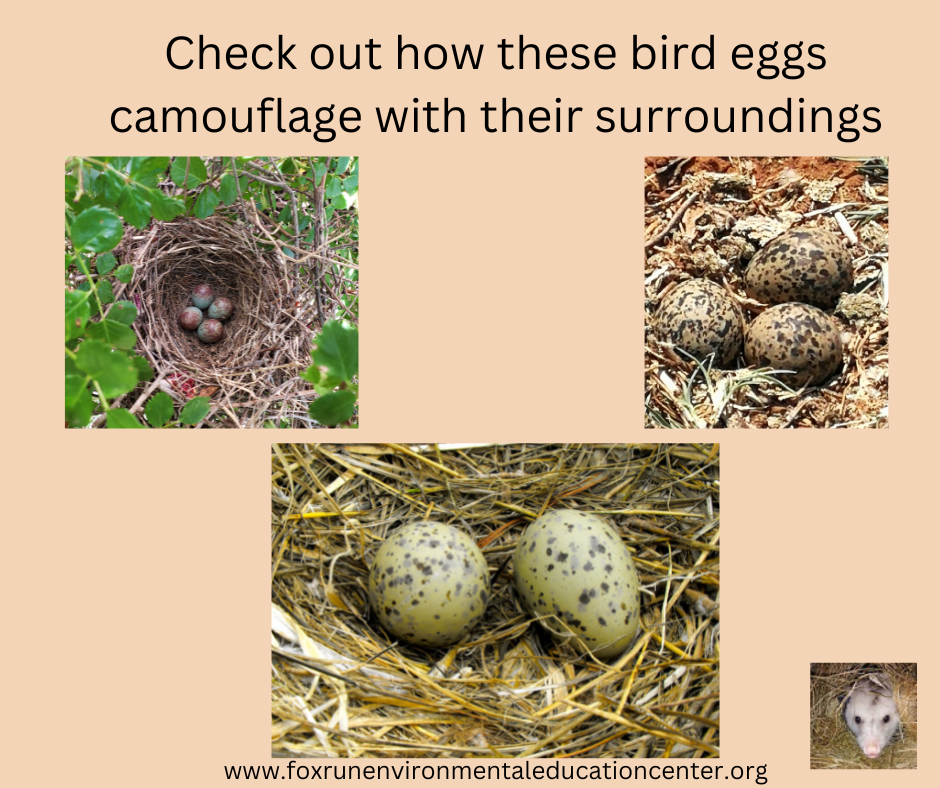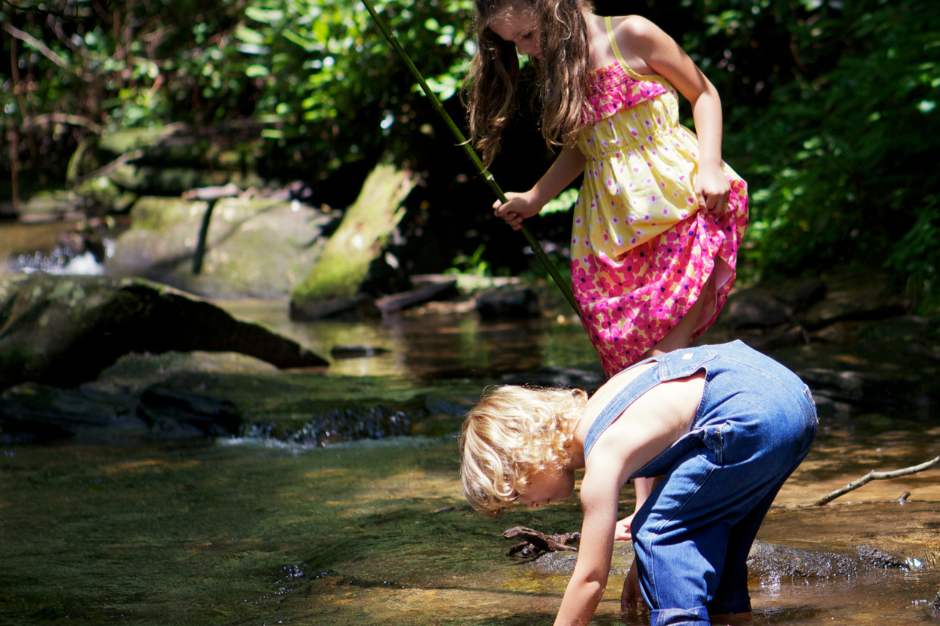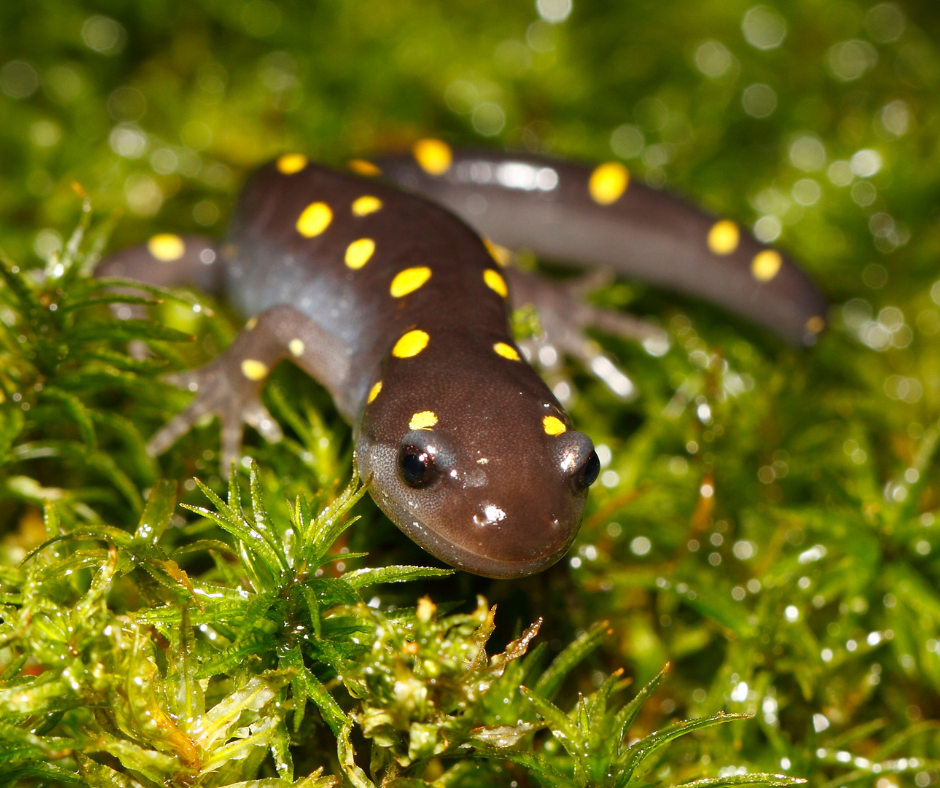There’s nothing quite like the magic of a forest to spark a young child’s imagination. The dappled sunlight, chirping birds, earthy smells, and crunchy leaves create a natural classroom that invites exploration.
For preschoolers and early elementary-aged children, a forest sensory walk is a wonderful way to learn about the environment. Full of things to hear, see, smell, taste, and touch. Plan to take a walk in the forest and use your senses to explore.
As humans, we evolved to use our senses to survive and process information. Now we can use our senses to explore, disconnect from technology, and connect with the natural world.
This article will guide you through planning and enjoying a sensory-rich walk in an Eastern temperate forest. Geared towards ages 4-7 each activity helps to bring you closer to your natural surroundings.
The key is finding spaces where children can safely touch, explore, and investigate without damaging sensitive ecosystems.
Preparing for Your Forest Sensory Adventure
Successful sensory hikes begin before you step foot on the trail. Choose locations with diverse features like fallen logs, creek beds, varied vegetation, and different elevations. Local urban parks, nature preserves, and even small wooded areas near schools provide excellent venues.
Pack a simple exploration kit:
magnifying glasses
binoculars
clipboards with paper/sketchbook
colored pencils
*small first aid kit
*water bottle
snacks to fuel curious minds
cell phone for safety and pictures but not scrolling!
Most importantly, set clear boundaries about what can be touched, collected temporarily, and what should remain undisturbed.
Establish simple forest etiquette beforehand: take only pictures and memories, leave only footprints, observe wildlife from a respectful distance, and stay together as a group. These guidelines help children develop environmental responsibility while ensuring everyone's safety and enjoyment.
Check out my book to help young children learn to identify wildlife tracks.
Sound
In the world of mammals our ears may seem a bit boring. I always loved to watch deers move their ears to focus on a sound just before they bolt away. Deer have rounded ears that seem to scoop up the sound.
Start by having your student compare animal ears.
Typically wild animals hear much better than humans. A fox can hear a mouse under several feet of snow!
Find a spot in the forest where you can sit and listen. Start by listening with your human ears. Then use some of the tricks below to magnify your hearing.
Listen!
To replicate a mammal’s ears and bring more sounds into your ears do one of these nifty tricks. Close your eyes when you do these and really focus on hearing.
Cup your hands behind your ears and push your outer ear slightly forward.
Roll a piece of construction paper into a cone shape. Tape it together so it doesn’t unravel. Place the small end in your ear (not too far)
Take two pieces of stiff paper, an old manilla folder works well, and cut them into deer-shaped ears. Place a hole at the top and bottom of the ears. Place a piece of wood or dowel in the holes. Bend the paper so it is concave and tape the wood to the paper to hold the shape.
Sound Explorations
Follow the sounds - with a partner go out to a park with a smooth path or trail. One person will be blindfolded so find a safe walking place. The second person goes down the path about a hundred feet. They will then ring a bell or hold a metronome and the blindfolded person follows the sound.
Partner Walk - holding hands, one person is blindfolded and the other person guides them. The blindfolded person describes the sounds they hear.
Listen to the trees - Different types of trees sound different on a breezy day.
How many birds can you identify through sound? Different woodpeckers can be identified by their tapping sounds on trees. Backyard Birdsongs from Cornell University is a fabulous resource to learn to identify birds by call.
What about frogs and insects? My article on Wisconsin Frogs has audio of each frog.
Sit and Listen – Find a quiet spot and have everyone sit or stand still for one minute. Then ask: What did you hear? Birds chirping? Leaves rustling? Maybe a frog croaking or a squirrel chattering? Repeat this in different parts of the forest and compare the sounds.
Sound Mapping – Give each child a sheet of paper with a small dot in the center (that represents where they are sitting). As they hear sounds, they can draw simple pictures or marks around the dot showing where each sound came from. For example, a bird singing to the left gets a bird doodle on the left side of the dot.
Animal Communication
Animals use a variety of sounds to communicate. They may make sounds with their mouth and vocal cords. They may also make sounds with their bodies.
For instance, deer paw the ground, birds flap their wings, rabbits thump with their hind legs, and crickets rub their legs together.
Try to identify animals by their sounds and mimic them.
Cornell University has lesson plans for K-12 called Exploring Animal Communication across Ecosystems with BeastBox.
Sight
Visual information is the sense that we often use or rely on the most. Our worlds is made for visual learners. But do we really see things?
Go for a hike in the forest. At first glance, it may look like a blur of greens and browns depending on the season. Look at each plant or tree individually.
Compare the green plants
Compare the bark of various trees
Look at the soil in different places
Play a game of I - Spy
Color scavenger hunts work wonderfully in forest settings, where children search for items in specific colors or color gradations. Challenge them to find five different shades of green, from the pale green of new leaves to the deep forest green of mature evergreen needles. This activity develops color discrimination while highlighting the incredible diversity within seemingly uniform environments.
There is a variety of plants. This is a fun activity to do each season so you can examine how the colors change.
Pick a spot in a local part or forest. Go to that spot once a month and observe what’s happening. You can even make a journal to document your spot.
Any notebook will do however I recently purchased these Melissa and Doug mini sketchbooks for my niece. She likes them because they are easy to carry while hiking and the spiral binding makes it easier to have a flat page to draw/write on.
Camouflage and Countershading
Animals have evolved so that their colors become a defense mechanism. Camouflage is the way the animal’s coloring that helps them to blend in with its environment.
Countershading is when the underside or belly of the animal is a lighter color. This breaks up the animal in a way that makes it harder for predators to see.
As well as the birds being camouflaged often their eggs are too.
Make a Camouflaged Egg
Here’s a great activity from the Book of Nature Connection. (I highly recommend this book for families and homeschoolers).
Materials:
Hard Boiled Egg - one for each person
Acrylic craft paints
Paintbrush
Procedure:
Each person paints an egg with a pattern they think will camouflage the egg in nature
Let eggs dry
Take the eggs outside. Each person takes a turn “hiding” their egg in nature. The other people try to find it. (Remember by hiding you need to put it in a place the bird could put it such as among some grasses on the ground or in a bush)
It’s also fun to leave one egg unpainted and see if it’s easier or harder to locate.
Paper Tube Viewer
Artists and photographers know that when you isolate an object it becomes clearer.
Use a paper tube from toilet paper or paper towels to use as a viewer.
Sit in the park or along a path in the woods. Hold the viewer to one of your eyes. Close the other eye. What do you see?
Speaking of night hikes - check out my tips on finding owls!
Night Hike
Take a family hike at night. It’s best when the sky is clear. Go to a large park or out in the country to avoid the light pollution of the city.
Take a flashlight for safety but try to leave it off.
Shapes In Nature
If you have young children you might look for basic shapes such as circles, squares, and triangles. Older students can look for elliptical, heart, oval, star, or spiral.
What about leaf shapes? Identifying tree species by their leaves can help your nature study.
Leaf Identification
Learning to identify trees by their leaf shape is a fabulous skill and a way to become closer to nature. (for more advanced nature learners try identifying trees by their bark).
Smell
We all have favorite memories associated with smell. Mine is my grandmother’s French perfume. Which is odd because I don’t wear perfume myself.
There are so many great smells in nature. Soil after a rain, leaves in fall, and even skunks! The earthy aroma of decomposing leaves, the fresh scent of moss after rain, or the resinous smell of evergreen trees each tell stories about forest processes and seasonal changes.
Many safe plants like wild mint, cedar, or pine can be identified partially through their distinctive aromas, providing another tool for nature identification. Evergreen Trees have distinct scents according to their species. That’s because they produce terpenes to protect themselves from insects.
Make Scent Pouches
Sometimes we make fabric pouches of things like lavender or cedar to place in drawers or closets. You don’t have to limit yourself!
Making a scent pouch or sachet can be different during the seasons. You can forage for plants during the seasons.
Start by cutting up some pretty fabric in 5x5 inch pieces. You will place your items in the middle, draw up the sides and tie them together with a ribbon. Alternatively, you can purchase small organic muslin bags.
Some good smells to collect from your backyard or local park. Remember to take just a small amount, gather fallen materials, and don’t disturb endangered plants.
Backyards - Lilac, roses, honeysuckle, heliotrope
Wildflowers - musk mallow, yarrow, burnet, wild mint, and onions
Pine or cedar needles and bark (from fallen branches)
Place some soil in your pouch
Seasonal Smells
Think about how the seasons smell differently. We cant see scents so we often use our sense of sight to identify smells or put them in context. Both temperature and humidity affect scents in the air.
Spring - spring rains have a distinct odor which is caused by some chemicals traveling down from the clouds including ozone. When the soil is wet a chemical called geosmin is excreted by soil bacteria.
Summer - We often associate summer with green grass and flowers. Plants are giving off lots of scents looking to draw in pollinators.
Fall - When leaves fall from trees they actually release chemicals called terpene and isoprenoids. These along with the decay of the plant’s fibers are what we associate with the smell of fall.
Winter - what we think of as the smell of snow may actually be an absence of other smells. Scientists say the decreased cold and increased humidity lowers other smells and triggers our brain to think snow is coming!
Check out my article Snow: 5 Fun Activities For Winter
Touch
Blindfold Trail
In the hearing section, we talked about a partner walk where one person is blindfolded and the other person guides them. Do the same thing with touch!
Make sure you discuss what things are ok for your blindfolded person to touch.
Good things to touch blindfolded are:
Tree bark and leaves
Smooth or semi-rough rocks
Different plant leaves - some are smooth, rough, fuzzy…
Moss
Soil
More great nature walk activities for families and homeschoolers
Earthing
Take off your shoes. Squish your feet in mud or walk in a creek.
Earthing or grounding is all about connecting with the energy from the earth. Our shoes run interference with us on a daily basis.
Mud pies
No, you’re not too old! Sit next to a creek, on a beach, or in your garden, and play away with your kids!
Mud pies help children have a close experience with the earth that involves all their senses. Refrain from making derogatory comments about them needing a bath! This is a fun experience with the earth.
Hug a tree
Hugging trees is not only a great sensory experience it is a spiritual one. Hugging a tree helps us to communicate on another level.
When you give a tree a hug you feel grounded, calm, and happy.
Read our article on Forest Bathing.
You can download my Bingo Boards to take on your hike!
Taste Adventures (With Caution)
Taste is a fun one! who doesn't want to eat what the bears love. Berries. Taste does take some education though. Some things are edible and some are definitely not. Extension offices and nature centers often do classes on foraging locally. Blackberries and mulberries are two good ones to look for.
Never eat any plant unless you’re 100% sure it’s safe, and always model caution for children. If you are foraging on public property know the rules. Some park systems allow foraging and some do not.
And depending on where you live you may need to yield to the wildlife. Be safe and observe from afar. Put those binoculars to use.
Alternatively, you can bring along natural treats like locally grown fruit to connect the forest walk with taste.
Use taste experiences to discuss how animals find food in forests, what different animals eat, and how plants protect themselves from being eaten. These conversations naturally lead to discussions about adaptation, survival strategies, and ecological relationships.
Author, Ame Vanorio, is the founder of Fox Run EEC, an environmental educator, author, and wildlife conservationist.










